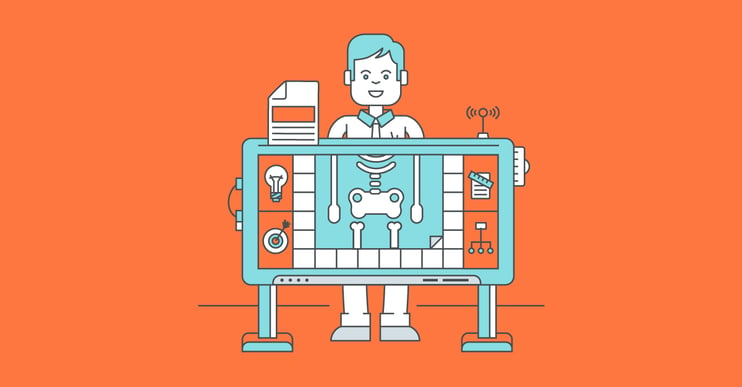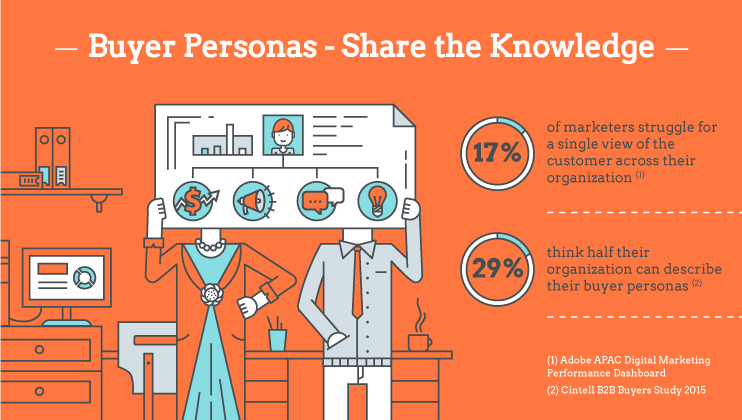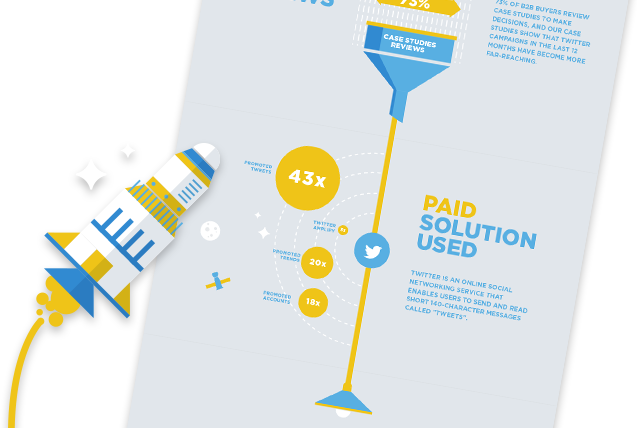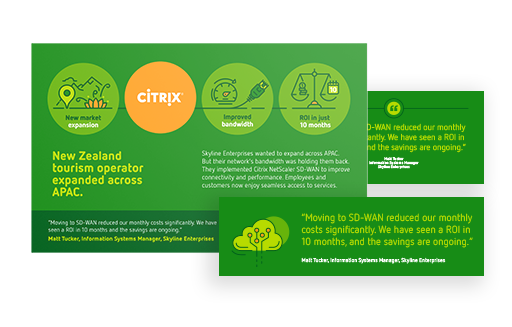
Are buyer personas and target audience terms that can be used interchangeably? If not, what are the differences between the two? Let's take a closer look.
A woman walks into a bookstore looking to buy a gift for a friend.
– I’d be more than happy to help you, says the salesperson, just tell me something more about your friend.
– Well, he’s in his 40s or 50s, I think. I’m not really sure.
– OK, what genres does he like? Historical fiction, biographies... crime novels?
– To be honest, I don't know that much about him. He's pretty well-off, though.
– Umm...That doesn't really help. Books haven't been a luxury item for the past couple of centuries. Anything else you know about him, anything that could help?
– He lives in Oregon.

A typical example of a company’s target audience can be summarized like that: men in their 40s and 50s who earn over $90k per year and live in Oregon. This rudimentary data may work well for traditional marketing methods, but not so well if you’re trying to implement an inbound marketing strategy (or buy these people Christmas gifts). Target audience relies on the shared characteristics of the audience as a group, ignoring them as individuals and offering uniform messaging for all audience members.
In inbound marketing, your goal is to learn your customers’ pain points — their problems and challenges — and match them to your product or service through clever messaging. The inbound approach has you digging deeper into your audience’s habits and behaviors to create a strategy that will most likely pique their interest. Since members of the target audience are different in numerous ways, the idea is to segment them into several groups that are the most similar, with each group represented by one buyer persona.
What is a buyer persona?
A buyer persona is a fictional representation of your ideal customer, simulating a real person with their idiosyncrasies, feelings, and everything else that divides humans from robots (besides being able to pass the Turing test). The number of buyer personas depends on the complexity of the marketing campaign you want to launch and on the nature of your audience, but the general rule of thumb is to stick to around 3–4 personas and not go overboard.

How are buyer personas different from target audience?
It is understandable that someone who has been using the same method for years could be skeptical about a new approach that sounds strangely similar to the old one. In our years of working with clients, we have dealt with people who used the terms target audience and buyer personas interchangeably or tried to convince us they didn’t need all that buyer persona mumbo-jumbo since they already had a well-defined target audience. The trouble is, if your rivals are already using inbound marketing, expecting to build a competitive marketing strategy around a target audience is similar to sending your marketing team to a shooting range armed with a pair of slingshots. Here is what makes buyer personas different from target audience:
1) More detailed
A thorough buyer persona creation process will go so deep into detail it will try to assume the persona’s daily routine — the way they spend their typical day from the moment they wake up till they go to sleep. Part of the process involves naming personas after attributes that help distinguish them and make them easy to remember (Manager, Technical, Impulsive, Skeptical) followed by a first name beginning with the same letter as the attribute (Mike, Trudy, Ivan, Sally). Someone facing this concept for the first time might think it silly to read that Executive Eric likes to start his morning with a latte, Forbes, and The Economist, or that he spends the evening reading after having dinner with his wife and two children.
Why would all this matter to us? By going through a buyer persona’s imaginary day (which is based on research and not simply made up), we learn valuable facts — where they get their information online (or offline), the best time to publish content aimed at them, how likely they are to make risky business moves if they are the sole breadwinner, etc.

2) More psychographics-oriented
While terms like impulse buyer are nothing new to traditional marketers, and campaigns that provoke emotional responses have been used since the dawn of marketing (think Don Draper), inbound marketing takes a more structured approach. The most vital facts to know about your buyer personas are their motivators: goals, challenges, and pain points. By knowing these, a good marketer knows how to trigger a response and make the buyer persona realize how a product or service helps solve their problem.
Which social media networks does this person use? What is their daily workload? Do they have time to go through 30-page eBooks or white papers, or do they rely on concise information from short content assets? Do they want to impress their boss by making a smart decision? Or do they need a solution that will solve the company’s pain point with minimal risk and investment? These are all valid questions when building buyer personas.
3) They allow for different messaging
By dividing your audience into buyer personas, you get a chance to adjust the tone and voice for each of the personas. This is substantial for B2B businesses, where you’ll most likely be dealing with different types of decision makers — CEOs, CFOs, etc. The success of your campaign will rely on how much your content ‘speaks’ to the persona — and you can tell the same story from different angles. A CFO doesn’t want to be bothered with inbound marketing terms that are all Greek to him or her; they want to see the idea presented through the financial aspect. If you’re a marketer trying to implement the concept of buyer personas but keep hitting the wall when trying to pitch the idea to your superiors, here we talk more about how to get your team on board with inbound.
Why use buyer personas instead of target audience? In practice.
Three words: they work better.
Let’s use an example of an imaginary B2C company from Belgium that sells affordable cosmetics and skin care products. Their target audience could look something like this:
Female, 18–50 years old, moderate income, living in Belgium.
To advertise to such a wide audience means to disregard the diversity of the group and produce one unique message for all. That message boils down to flaunting your USPs (unique selling points — such as affordable prices, quality products, natural ingredients, etc.). The broader the message, the less chance that it will provoke audience interest.
If you took this target audience and broke it down into three buyer personas — let’s call them Teenage Tara, Regular Reese, and Mature Mandy — you could address the pain points of each of the three groups and separate out your marketing strategy for each of them.
For example, Teenage Tara has zero interest in anti-wrinkle products, but she might be struggling with some skin condition in the aftermath of puberty. She is experimenting with colors, follows trends, wants to look cool to her peers. For her, there would be campaigns relying heavily on social media and influencers like beauty vloggers who could test and review your products, the content assets would be in short form (good luck getting a millennial to read a 10-page brochure), the messaging voice would be informal, etc.
At the opposite end of the spectrum, someone like Mature Mandy already knows from experience which product types and color tones work best for her. She is looking for quality (and ideally an anti-aging cream that actually works) and isn’t much affected by trends. For Mature Mandy to hear and react to your message, you would need a different tone and voice, and different content forms, topics, distribution channels, and influencers than you used to appeal to Teenage Tara.
Conclusion
This was a very simplified example of buyer personas to illustrate how much freedom and precision this method gives you in comparison to target audience. In reality, there is a lot of research and planning behind the buyer persona creation process, but this isn’t something we want to discuss right now. What we're trying to point out is that a strategy founded on well-crafted buyer personas has great potential, especially at a time when this approach is more of a rule than an exception.
You’ve reached the point where you, the reader, part ways with us, and we try to convince you to give us a bit more of your time. So, if the whole buyer persona idea sounds like something your company could benefit from, download our Introduction to B2B Inbound Marketing eBook, learn about the inbound basics, try to find Waldo in the illustrations, and take the STASIS test to see if inbound marketing is right for you. Or you can just simply talk and discuss it with us.






